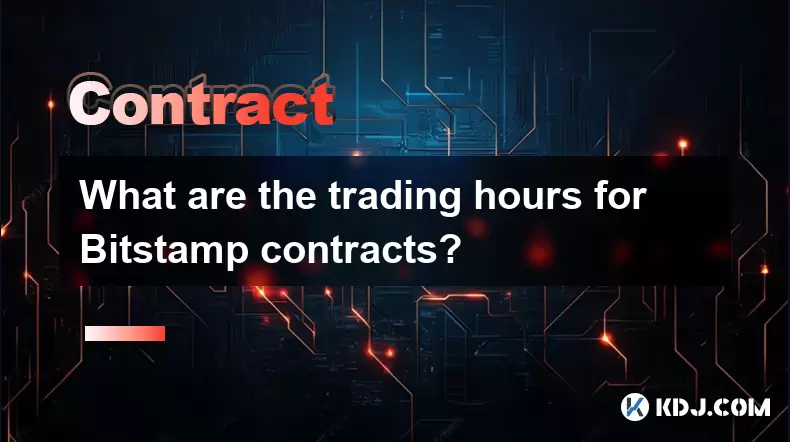-
 Bitcoin
Bitcoin $117500
2.04% -
 Ethereum
Ethereum $3759
3.02% -
 XRP
XRP $3.171
3.30% -
 Tether USDt
Tether USDt $1.000
0.03% -
 BNB
BNB $782.4
2.52% -
 Solana
Solana $187.2
5.62% -
 USDC
USDC $0.0000
0.02% -
 Dogecoin
Dogecoin $0.2380
5.26% -
 TRON
TRON $0.3175
1.07% -
 Cardano
Cardano $0.8227
4.03% -
 Hyperliquid
Hyperliquid $44.50
5.44% -
 Sui
Sui $4.020
10.07% -
 Stellar
Stellar $0.4396
6.28% -
 Chainlink
Chainlink $18.32
4.55% -
 Hedera
Hedera $0.2628
10.71% -
 Bitcoin Cash
Bitcoin Cash $554.8
4.90% -
 Avalanche
Avalanche $24.20
4.60% -
 Litecoin
Litecoin $113.7
2.31% -
 Shiba Inu
Shiba Inu $0.00001413
5.99% -
 UNUS SED LEO
UNUS SED LEO $8.984
0.11% -
 Toncoin
Toncoin $3.326
7.22% -
 Ethena USDe
Ethena USDe $1.001
0.00% -
 Uniswap
Uniswap $10.49
4.56% -
 Polkadot
Polkadot $4.092
4.02% -
 Monero
Monero $326.6
1.30% -
 Dai
Dai $1.000
-0.01% -
 Bitget Token
Bitget Token $4.570
2.49% -
 Pepe
Pepe $0.00001267
5.10% -
 Aave
Aave $297.3
3.10% -
 Cronos
Cronos $0.1344
4.10%
How does the Binance Futures insurance fund work?
The Binance Futures Insurance Fund protects traders from losses during volatile market conditions by covering shortfalls from failed liquidations—ensuring profitable trades are fully paid.
Jul 26, 2025 at 10:51 am

What is the Binance Futures Insurance Fund?
The Binance Futures Insurance Fund is a dedicated reserve designed to protect traders from losses that may occur due to auto-deleveraging (ADL) events. When a trader's position is liquidated and the market price moves too quickly for the liquidation engine to close it at a profitable rate, the fund steps in. This mechanism ensures that profitable traders receive their full PNL—even if the losing side of the trade cannot cover the full amount. The fund is separate from Binance’s operational capital, and its balance is publicly viewable on the Binance Futures page.
How is the Insurance Fund Built?
The fund grows through several sources:
- Liquidation fees: When a position is liquidated, a portion of the fee collected goes directly into the insurance fund.
- Profit from forced liquidations: If a liquidated position is closed at a better price than the bankruptcy price, the surplus is added to the fund.
- Funding rate adjustments: In rare cases, if the funding rate mechanism generates excess income, a portion may be allocated to the fund.
Each futures contract (e.g., BTCUSDT, ETHUSDT) has its own isolated insurance balance, meaning the fund for BTC does not cover losses in ETH or other pairs. This isolation ensures risk containment within each market.When Does the Insurance Fund Activate?
The fund is triggered automatically when a liquidation leads to a negative balance that cannot be absorbed by the counterparty’s margin. This typically happens during extreme volatility or low liquidity. For example: - A long position is liquidated at $30,000, but the bankruptcy price was $31,000.
- The system attempts to close the position, but slippage pushes the actual execution price to $29,500.
- The difference between the bankruptcy price and the actual execution creates a deficit.
In such cases, the insurance fund covers the shortfall so that the profitable short position receives its full gains. This prevents ADL from impacting profitable traders.How to Check the Insurance Fund Balance?
To view the current balance of the Insurance Fund: - Log in to your Binance account.
- Navigate to the Futures section.
- Click on “Insurance Fund” at the top of the trading interface.
- Select the specific contract (e.g., BTCUSDT perpetual).
The balance is updated in real-time and displayed in USDT. You can also see historical changes in the fund, including inflows from liquidations and outflows from coverage events. This transparency allows traders to assess the health of the market they are participating in.What Happens If the Insurance Fund Is Depleted?
If the fund balance reaches zero and another loss event occurs, Binance initiates the Auto-Deleveraging (ADL) system. This means profitable positions may be forcibly reduced to absorb the loss from failed liquidations. ADL rankings are based on: - Profitability of the position (most profitable first).
- Leverage used (higher leverage positions are prioritized).
- Total unrealized PNL.
Traders can monitor their ADL rank in the position tab—it appears as a number from 1 to 5. A rank of 1 indicates the highest risk of being deleveraged. To avoid this, traders can reduce leverage or close positions during high volatility.How to Reduce Risk Related to the Insurance Fund?
Traders can take proactive steps to minimize exposure: - Use lower leverage: Positions with 5x or 10x are less likely to trigger ADL than 50x or 100x.
- Monitor fund balance: If the insurance fund for a specific pair drops below a critical threshold (e.g., 100 BTC for BTCUSDT), consider reducing exposure.
- Avoid trading during high volatility: Events like CPI releases or flash crashes increase the chance of fund depletion.
- Set stop-loss orders: Even with the fund, slippage can cause losses—manual risk management remains essential.
Frequently Asked Questions
Can I withdraw from the Insurance Fund?
No. The Insurance Fund is not a user-accessible wallet. It is a system-controlled reserve that only activates during liquidation shortfalls. Users cannot deposit into or withdraw from it directly.Does the Insurance Fund cover all futures products equally?
No. Each futures contract maintains its own fund. For example, the BTCUSDT perpetual fund does not cover losses in the ETHUSDT market. This ensures that high volatility in one market doesn’t impact others.Why did I still get ADL even when the fund had a positive balance?
The fund only covers losses from liquidations that result in a negative balance. If the system cannot close a position at all—due to extreme slippage or lack of counterparty liquidity—ADL may activate even with a healthy fund.Is the Insurance Fund the same as the Binance Spot Wallet?
No. The Insurance Fund is completely separate from all user wallets, including Spot, Margin, and Futures wallets. It is a system-level safety net, not a shared pool of user funds.
Disclaimer:info@kdj.com
The information provided is not trading advice. kdj.com does not assume any responsibility for any investments made based on the information provided in this article. Cryptocurrencies are highly volatile and it is highly recommended that you invest with caution after thorough research!
If you believe that the content used on this website infringes your copyright, please contact us immediately (info@kdj.com) and we will delete it promptly.
- Cardano (ADA) Price Check: Bullish Potential or Better Bets?
- 2025-07-26 21:10:12
- Pi Network, Remittix, and the Binance Listing Buzz: What's the Deal?
- 2025-07-26 20:50:12
- Bitcoin to $1 Million? Decoding the Future of Crypto
- 2025-07-26 20:55:19
- Vaultz Capital's Bitcoin Bet: A Strategic Shift on the Aquis Exchange
- 2025-07-26 20:30:12
- Pi Coin, Wallet Features, and Coinbase: What's the Buzz?
- 2025-07-26 18:30:12
- Worldcoin, Punisher Coin, and the Meme Coin Mania: What's the Haps?
- 2025-07-26 18:30:12
Related knowledge

Why is my Bitstamp futures position being liquidated?
Jul 23,2025 at 11:08am
Understanding Futures Liquidation on BitstampFutures trading on Bitstamp involves borrowing funds to open leveraged positions, which amplifies both po...

Does Bitstamp offer inverse contracts?
Jul 23,2025 at 01:28pm
Understanding Inverse Contracts in Cryptocurrency TradingIn the realm of cryptocurrency derivatives, inverse contracts are a specific type of futures ...

How to find your Bitstamp futures trade history?
Jul 23,2025 at 08:07am
Understanding Bitstamp and Futures Trading AvailabilityAs of the current state of Bitstamp’s service offerings, it is critical to clarify that Bitstam...

Can I use a trailing stop on Bitstamp futures?
Jul 23,2025 at 01:42pm
Understanding Trailing Stops in Cryptocurrency TradingA trailing stop is a dynamic type of stop-loss order that adjusts automatically as the price of ...

Can I use a trailing stop on Bitstamp futures?
Jul 25,2025 at 02:28am
Understanding Trailing Stops in Cryptocurrency Futures TradingA trailing stop is a dynamic type of stop-loss order that adjusts automatically as the m...

What are the trading hours for Bitstamp contracts?
Jul 24,2025 at 11:56am
Understanding Bitstamp and Contract Trading AvailabilityBitstamp is one of the longest-standing cryptocurrency exchanges, established in 2011 and head...

Why is my Bitstamp futures position being liquidated?
Jul 23,2025 at 11:08am
Understanding Futures Liquidation on BitstampFutures trading on Bitstamp involves borrowing funds to open leveraged positions, which amplifies both po...

Does Bitstamp offer inverse contracts?
Jul 23,2025 at 01:28pm
Understanding Inverse Contracts in Cryptocurrency TradingIn the realm of cryptocurrency derivatives, inverse contracts are a specific type of futures ...

How to find your Bitstamp futures trade history?
Jul 23,2025 at 08:07am
Understanding Bitstamp and Futures Trading AvailabilityAs of the current state of Bitstamp’s service offerings, it is critical to clarify that Bitstam...

Can I use a trailing stop on Bitstamp futures?
Jul 23,2025 at 01:42pm
Understanding Trailing Stops in Cryptocurrency TradingA trailing stop is a dynamic type of stop-loss order that adjusts automatically as the price of ...

Can I use a trailing stop on Bitstamp futures?
Jul 25,2025 at 02:28am
Understanding Trailing Stops in Cryptocurrency Futures TradingA trailing stop is a dynamic type of stop-loss order that adjusts automatically as the m...

What are the trading hours for Bitstamp contracts?
Jul 24,2025 at 11:56am
Understanding Bitstamp and Contract Trading AvailabilityBitstamp is one of the longest-standing cryptocurrency exchanges, established in 2011 and head...
See all articles

























































































